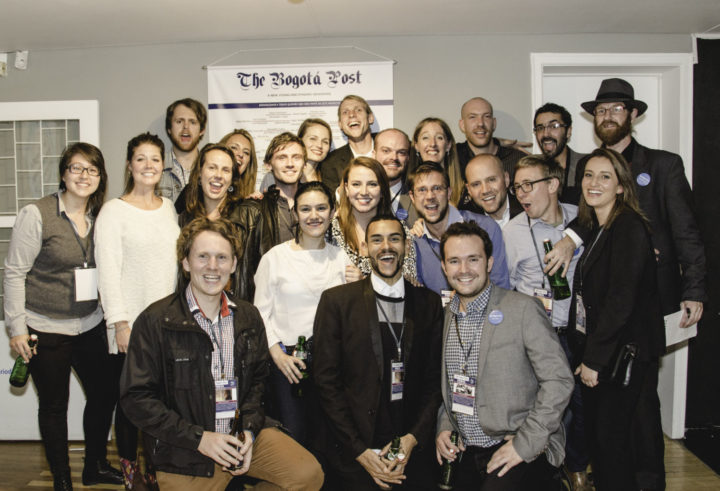This article contributed by Matthias Wagner
Leading a technology-focused team isn’t like leading other teams. Members of tech-minded teams work across a wide spectrum of issues — with user experience driving one end of the operation and machine logic dominating the other.
As a leader, it’s your job to communicate with people at both ends of that spectrum, helping them stay focused on key milestones and inspiring them along the way.
Humans vs. Machines
At one end of your team, you have members who are accustomed to resolving human (i.e., user) issues. These are your web developers. Thanks to their familiarity with addressing user experience issues, developers tend to be more people-savvy. Their role requires a certain amount of empathy, and this will make them easier to communicate with.
On the other hand, your engineers spend their days taming machine issues and the underlying programming that drives them. Their job is a deeply logical endeavor, and the deeper they get into programming, the more logical they become. Coaches often tell their players to “become one with the ball.” For engineers, becoming one with the computer — thinking like it and anticipating its needs — is the ultimate goal. This means temporarily forgetting their human side.
The best way to communicate with your engineers is to treat them like divers. Once they descend below the surface, they’ll be hard to reach. And when submerged for long periods, they’ll need time to decompress before returning to the surface. Combat this by meeting with your engineers first thing in the morning. Their systems will have readjusted to the oxygen in the air, so you’ll have smoother conversations and meetings.
Engineers Hate to Build Things
People are often surprised to hear this, but engineers don’t like to build things. They like to create things, and the difference between the two isn’t just semantics. In the triumvirate of software development — product managers, designers, and software engineers — only the engineers are expected to check their creativity at the door.
While software engineers might see themselves differently, others tend to treat engineers like builders. A product manager imagines something. A designer makes it pleasing to look at and to use. And an engineer is expected to build it — to put all the pieces together. No wonder engineers feel like the short-order cooks of the industry! Make sure your team understands that engineers are creators, not builders.
You build a comically small piece of IKEA furniture. To create something is to do so without direction. It’s to start with a blank canvas and paint a masterpiece.
Software engineers code because they enjoy creating something useful. If you want to win over the engineers on your team, don’t hand them a map; simply tell them where you want to go, and let them lead the way.
The Dos and Don’ts of Being a Tech Leader
There’s no playbook that covers how to be a leader in the tech space. And for good reason! With a playbook, we’d never make mistakes, improvise, or create something new. However, there’s no reason that we can’t learn from others’ mistakes. Here are a few things you should and shouldn’t do as a leader:
• Do guard against feature creep. Avoid switching focus too rapidly. Instead, stick to the agreed-upon features, stay on track, and don’t let your guard down.
• Don’t be the “idea guy.” Involve your teammates in the creative process, and allow them to generate ideas. As a founder, you’re on the hook for the “vision,” not the ideas.
• Do choose between speed and quality. You can ask your teammates to build things quickly, or you can ask them to build things that are high in quality. You can’t ask them to do both.
• Don’t micromanage. Build a culture that gives your team the freedom to explore and create. Micromanaging will kill the culture and innovation you’re seeking.
Lead With Confidence
Problems don’t stem from things going wrong; they stem from how you deal with things once they do. Your job is to steer your teammates back on course. Reassure them that problems exist to be solved. What we do when presented with a challenge is what separates a win from a failure.
Your experience will keep the team focused, so keep the following in mind:
1. Things always take longer than planned. Estimates are just that — estimates. Break down complex tasks into many smaller ones (i.e., things that can be accomplished within eight hours). Breaking a feature down forces you and your team to think through every detail and will result in more accurate estimates.
2. Working more than 40 hours a week isn’t sustainable. You might get away with working 60-hour workweeks to meet an important deadline in the short term. But eventually, burning the midnight oil will create friction. This kind of manic drive will hurt the quality of your work, even if you don’t notice it immediately. Although it may seem counterintuitive, it’s better to shift the deadline. Agree upon a more reasonable time frame, and stick to it.
3. Bugs happen. Deal with it! Don’t point fingers. Instead, find a constructive way to fight bugs, and accept that your product will always have bugs. Bug-free software only exists in your imagination. That doesn’t mean mediocrity is acceptable, though. If the bug is important, fix it now. If progress is more important, move on.
4. Adding more engineers will slow down the team. Many entrepreneurs struggle to learn this lesson, but it’s absolutely true. The bigger the team gets, the more “communication overhead” you have. Keep your team small. When your product is mature enough, you can switch to a service-oriented architecture with multiple teams working in sync. Until then, stay small and nimble.
Managing a tech-infused team can be a rewarding endeavor. It brings together some of the most powerful tools and insights of our time — from human experience to cutting-edge technology. But many entrepreneurs learn these lessons the hard way. Don’t be too shy or too proud to face your mistakes. Real leaders help their teams see the opportunities that mistakes provide.
Show your team that you believe in open communication, and you’ll be inspired by the results.
 “Matthias Wagner is a serial company starter and product manager, using creativity and technology to disrupt the status quo with products that people love. He has built more than 10 companies, founded Kaktus Lab, and consulted for a number of innovative companies, including Node, KeepSafe, and Ranku. Matthias teaches enterprises how to be more innovative and startups how to launch products that customers love.”
“Matthias Wagner is a serial company starter and product manager, using creativity and technology to disrupt the status quo with products that people love. He has built more than 10 companies, founded Kaktus Lab, and consulted for a number of innovative companies, including Node, KeepSafe, and Ranku. Matthias teaches enterprises how to be more innovative and startups how to launch products that customers love.”









